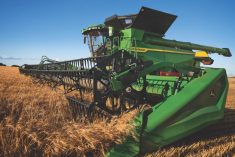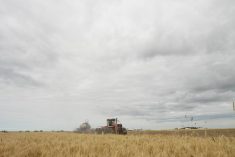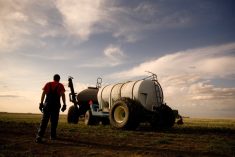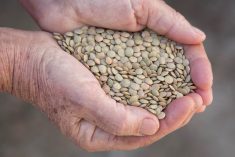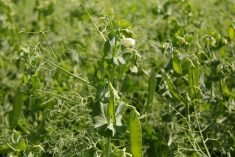CNS Canada — The world’s major weather forecasters predict a slightly better than 50 per cent chance that a La Nina weather pattern will occur this fall and winter.
Most Prairie farmers could see good things happening if the system does materialize, because La Nina systems tend to bring what many people think of as normal Prairie winters — meaning colder, and snowier.
“I think generally a colder, more traditional winter, with a higher probability of above-average snowfall,” said Bruce Burnett, director of weather and markets for Glacier FarmMedia.
Read Also
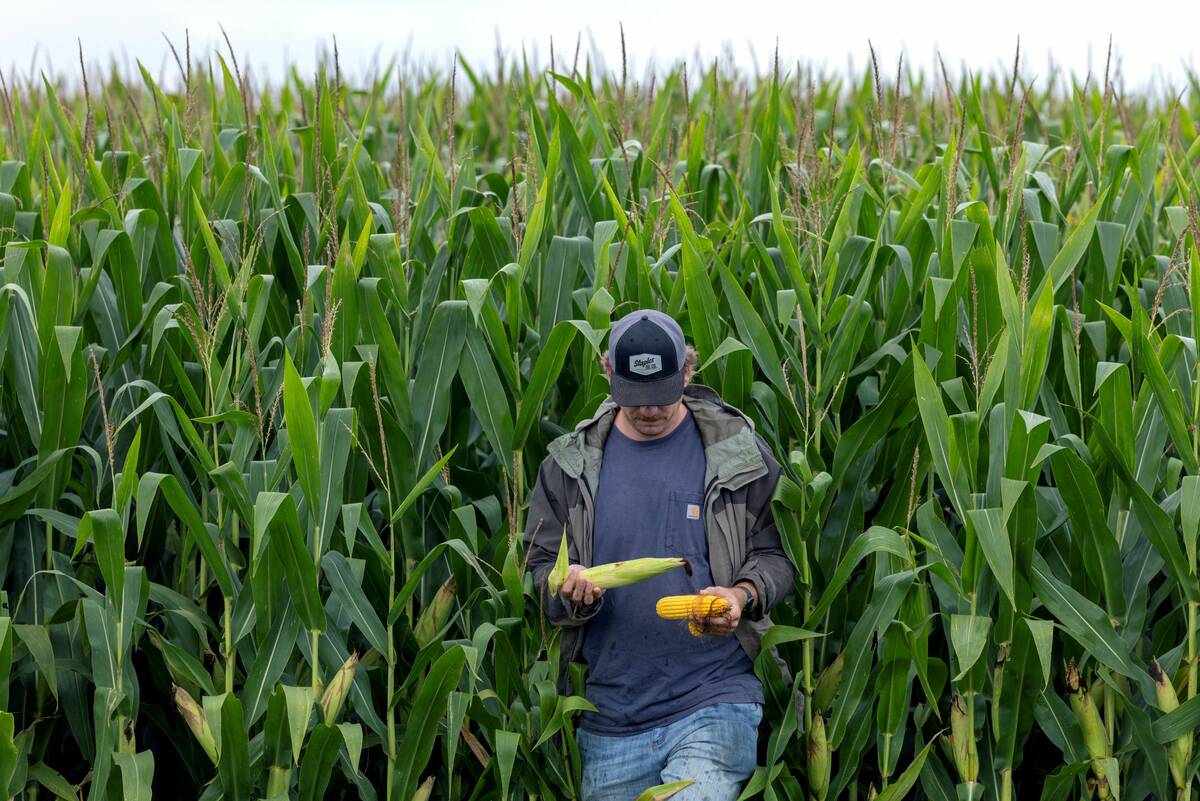
The U.S. corn crop could be the biggest ever. That’s terrible news for America’s farmers.
The USDA predicts a record corn crop for U.S. farmers, who question the agency’s accuracy amidst high debt and low crop prices.
He acknowledged areas of the northern Prairies have less need for snow to replenish soil moisture than do southern regions, but he said if more snow was to happen, it would “be a generally positive outcome.”
La Nina weather systems are events of below-average sea surface temperatures through the central Pacific Ocean and can affect worldwide weather patterns, usually contrary to El Nino’s effects.
The U.S.-based National Oceanic and Atmospheric Administration, Australia’s Bureau of Meteorology and the United Nations’ World Meteorology Organization all predict a 50-55 per cent chance of La Nina occurring this autumn and if that happens, its effects would carry over into 2018.
“That’s little better than a coin flip to happen,” Burnett pointed out. Then there are numerous other factors that come into play that could still disrupt the outlook.
But if a La Nina does break, “certainly, in some of the southern areas that haven’t picked up on any of these (fall) rains — or snow — even a little snow goes a long way.”
People adverse to the cold may not be so enthused about the news, he added.
While the eastern and northern Prairies often see greater snowpack and lower temperatures during La Nina events, Burnett said sometimes southwestern areas from Calgary to Swift Current see minimal effects, while in other La Nina years they are affected.
Generally, people living around Edmonton, Saskatoon reaching down to Regina, and Winnipeg feel the impact, he said.
According to Environment Canada, La Nina conditions are also known to include above-average precipitation during winter months in British Columbia, Ontario and Quebec, and drier conditions for both the Pacific coastal and southeastern U.S.
La Nina can affect international markets as well.
In northern soybean-growing areas of South America, harvests can be affected by the wetter weather La Nina is known to bring to that area. In drier regions farther south, late soybean plantings can be affected and winter wheat seeding can be affected next year, Burnett said.
Australia generally tends to do better in La Nina years, with the added precipitation it brings. While it’s too late for this year, it could affect next year’s crop by giving producers there more soil moisture to plant into, Burnett said.
Next year’s monsoon season in India can also be affected by La Nina, depending on the strength of the La Nina occurrence.
— Terry Fries writes for Commodity News Service Canada, a Winnipeg company specializing in grain and commodity market reporting. Includes files from AGCanada.com Network staff.



